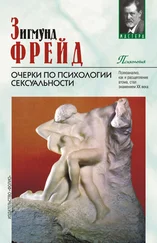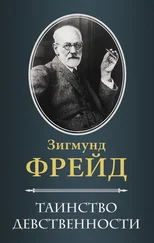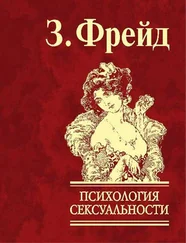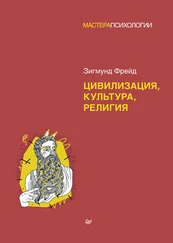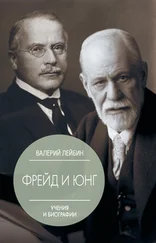Зигмунд Фрейд - Totem and Taboo
Здесь есть возможность читать онлайн «Зигмунд Фрейд - Totem and Taboo» весь текст электронной книги совершенно бесплатно (целиком полную версию без сокращений). В некоторых случаях можно слушать аудио, скачать через торрент в формате fb2 и присутствует краткое содержание. Год выпуска: 2014, Издательство: epubBooks Classics, Жанр: Психология, на английском языке. Описание произведения, (предисловие) а так же отзывы посетителей доступны на портале библиотеки ЛибКат.
- Название:Totem and Taboo
- Автор:
- Издательство:epubBooks Classics
- Жанр:
- Год:2014
- ISBN:нет данных
- Рейтинг книги:3 / 5. Голосов: 1
-
Избранное:Добавить в избранное
- Отзывы:
-
Ваша оценка:
- 60
- 1
- 2
- 3
- 4
- 5
Totem and Taboo: краткое содержание, описание и аннотация
Предлагаем к чтению аннотацию, описание, краткое содержание или предисловие (зависит от того, что написал сам автор книги «Totem and Taboo»). Если вы не нашли необходимую информацию о книге — напишите в комментариях, мы постараемся отыскать её.
Totem and Taboo — читать онлайн бесплатно полную книгу (весь текст) целиком
Ниже представлен текст книги, разбитый по страницам. Система сохранения места последней прочитанной страницы, позволяет с удобством читать онлайн бесплатно книгу «Totem and Taboo», без необходимости каждый раз заново искать на чём Вы остановились. Поставьте закладку, и сможете в любой момент перейти на страницу, на которой закончили чтение.
Интервал:
Закладка:
“In Australia the regular penalty for sexual intercourse with a person of a forbidden clan is death. It matters not whether the woman is of the same local group or has been captured in war from another tribe; a man of the wrong clan who uses her as his wife is hunted down and killed by his clansmen, and so is the woman; though in some cases, if they succeed in eluding capture for a certain time, the offence may be condoned. In the Ta–Ta–thi tribe, New South Wales, in the rare cases which occur, the man is killed, but the woman is only beaten or speared, or both, till she is nearly dead; the reason given for not actually killing her being that she was probably coerced. Even in casual amours the clan prohibitions are strictly observed; any violations of these prohibitions ‘are regarded with the utmost abhorrence and are punished by death’ (Howitt).”
( b ) As the same severe punishment is also meted out for temporary love affairs which have not resulted in childbirth, the assumption of other motives, perhaps of a practical nature, becomes improbable.
( c ) As the totem is hereditary and is not changed by marriage, the results of the prohibition, for instance in the case of maternal heredity, are easily perceived. If, for example, the man belongs to a clan with the totem of the Kangaroo and marries a woman of the Emu totem, the children, both boys and girls, are all Emu. According to the totem law incestuous relations with his mother and his sister, who are Emu like himself, are therefore made impossible for a son of this marriage [12] But the father, who is a Kangaroo, is free—at least under this prohibition—to commit incest with his daughters, who are Emu. In the case of paternal inheritance of the totem the father would be Kangaroo as well as the children; then incest with the daughters would be forbidden to the father and incest with the mother would be left open to the son. These consequences of the totem prohibition seem to indicate that the maternal inheritance is older than the paternal one, for there are grounds for assuming that the totem prohibitions are directed first of all against the incestuous desires of the son.
.
( d ) But we need only a reminder to realize that the exogamy connected with the totem accomplishes more; that is, aims at more than the prevention of incest with the mother or the sisters. It also makes it impossible for the man to have sexual union with all the women of his own group, with a number of females, therefore, who are not consanguineously related to him, by treating all these women like blood relations. The psychological justification for this extraordinary restriction, which far exceeds anything comparable to it among civilized races, is not, at first, evident. All we seem to understand is that the rôle of the totem (the animal) as ancestor is taken very seriously. Everybody descended from the same totem is consanguineous; that is, of one family; and in this family the most distant grades of relationship are recognized as an absolute obstacle to sexual union.
Thus these savages reveal to us an unusually high grade of incest dread or incest sensitiveness, combined with the peculiarity, which we do not very well understand, of substituting the totem relationship for the real blood relationship. But we must not exaggerate this contradiction too much, and let us bear in mind that the totem prohibitions include real incest as a special case.
In what manner the substitution of the totem group for the actual family has come about remains a riddle, the solution of which is perhaps bound up with the explanation of the totem itself. Of course it must be remembered that with a certain freedom of sexual intercourse, extending beyond the limitations of matrimony, the blood relationship, and with it also the prevention of incest, becomes so uncertain that we cannot dispense with some other basis for the prohibition. It is therefore not superfluous to note that the customs of Australians recognize social conditions and festive occasions at which the exclusive conjugal right of a man to a woman is violated.
The linguistic customs of these tribes, as well as of most totem races, reveals a peculiarity which undoubtedly is pertinent in this connection. For the designations of relationship of which they make use do not take into consideration the relationship between two individuals, but between an individual and his group; they belong, according to the expression of L. H. Morgan, to the ‘classifying’ system. That means that a man calls not only his begetter ‘father’ but also every other man who, according to the tribal regulations, might have married his mother and thus become his father; he calls ‘mother’ not only the woman who bore him but also every other woman who might have become his mother without violation of the tribal laws; he calls ‘brothers’ and ‘sisters’ not only the children of his real parents, but also the children of all the persons named who stand in the parental group relation with him, and so on. The kinship names which two Australians give each other do not, therefore, necessarily point to a blood relationship between them, as they would have to according to the custom of our language; they signify much more the social than the physical relations. An approach to this classifying system is perhaps to be found in our nursery, when the child is induced to greet every male and female friend of the parents as ‘uncle’ and ‘aunt’, or it may be found in a transferred sense when we speak of ‘Brothers in Apollo’, or ‘Sisters in Christ’.
The explanation of this linguistic custom, which seems so strange to us, is simple if looked upon as a remnant and indication of those marriage institutions which the Rev. L. Fison has called ‘group marriage’, characterized by a number of men exercising conjugal rights over a number of women. The children of this group marriage would then rightly look upon each other as brothers and sisters although not born of the same mother, and would take all the men of the group for their fathers.
Although a number of authors, as, for instance, B. Westermarck in his History of Human Marriage [13] Second edition, 1902.
, oppose the conclusions which others have drawn from the existence of group–relationship names, the best authorities on the Australian savages are agreed that the classificatory relationship names must be considered as survivals from the period of group marriages. And, according to Spencer and Gillen [14] The Native Tribes of Central Australia (London, 1899).
, a certain form of group marriage can be established as still existing to–day among the tribes of the Urabunna and the Dieri. Group marriage therefore preceded individual marriage among these races, and did not disappear without leaving distinct traces in language and custom.
But if we replace individual marriage, we can then grasp the apparent excess of cases of incest shunning which we have met among these same races. The totem exogamy, or prohibition of sexual intercourse between members of the same clan, seemed the most appropriate means for the prevention of group incest; and this totem exogamy then became fixed and long survived its original motivation.
Although we believe we understand the motives of the marriage restrictions among the Australian savages, we have still to learn that the actual conditions reveal a still more bewildering complication. For there are only few tribes in Australia which show no other prohibition besides the totem barrier. Most of them are so organized that they fall into two divisions which have been called marriage classes, or phratries. Each of these marriage groups is exogamous and includes a majority of totem groups. Usually each marriage group is again divided into two subclasses (subphratries), and the whole tribe is therefore divided into four classes; the subclasses thus standing between the phratries and the totem groups.
Читать дальшеИнтервал:
Закладка:
Похожие книги на «Totem and Taboo»
Представляем Вашему вниманию похожие книги на «Totem and Taboo» списком для выбора. Мы отобрали схожую по названию и смыслу литературу в надежде предоставить читателям больше вариантов отыскать новые, интересные, ещё непрочитанные произведения.
Обсуждение, отзывы о книге «Totem and Taboo» и просто собственные мнения читателей. Оставьте ваши комментарии, напишите, что Вы думаете о произведении, его смысле или главных героях. Укажите что конкретно понравилось, а что нет, и почему Вы так считаете.


